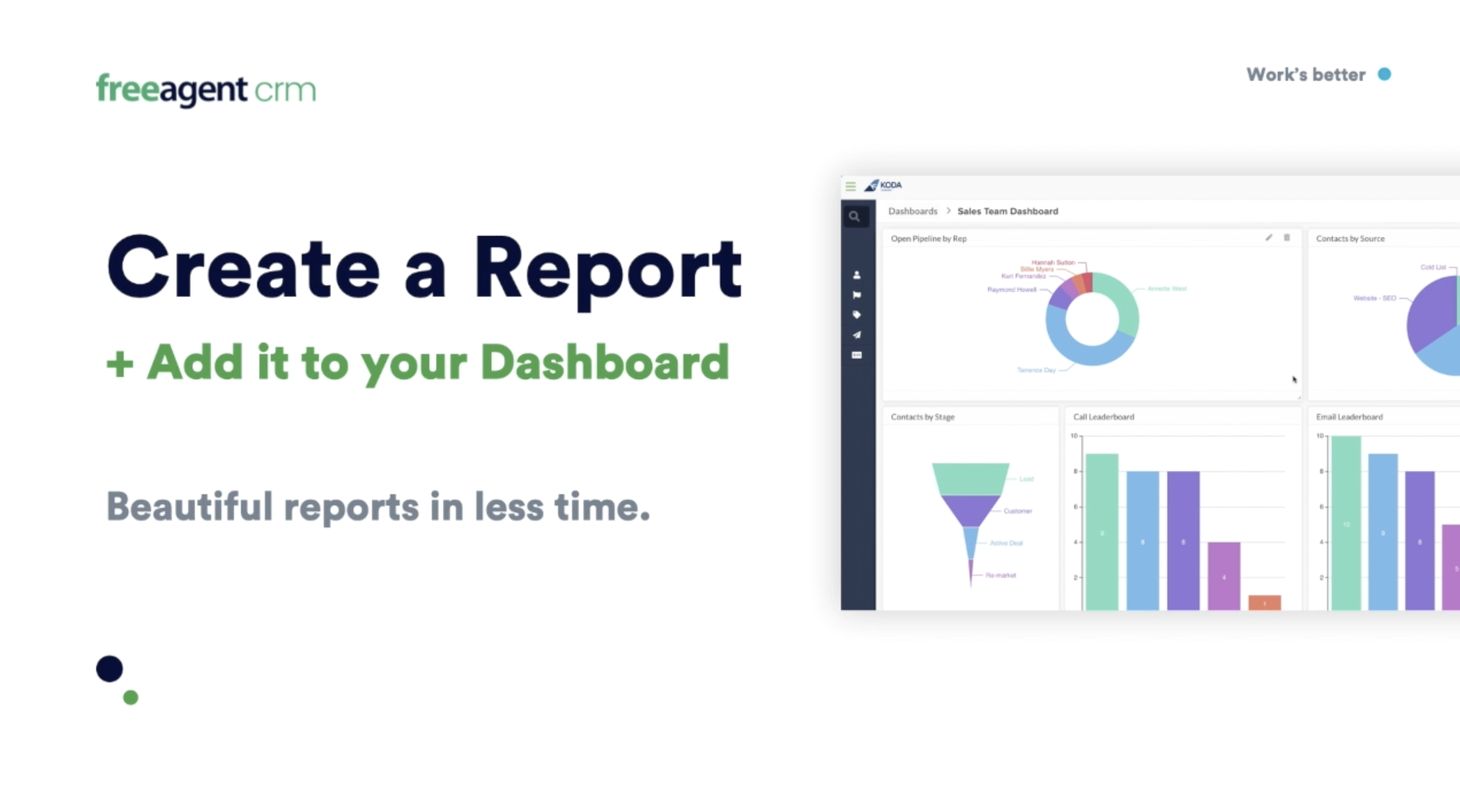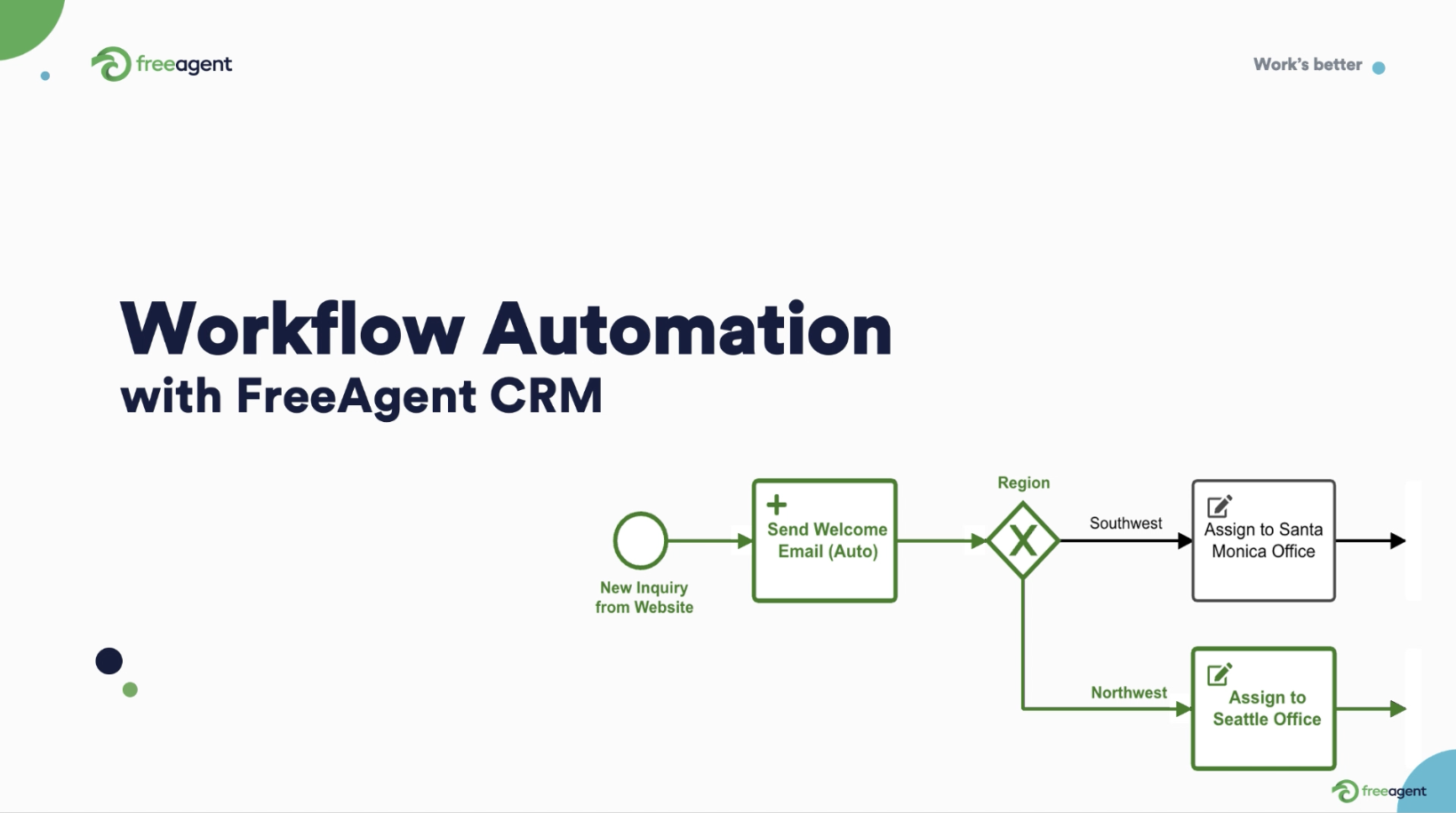For businesses looking to grow (who isn’t?), manual record-keeping and work management can be significant obstacles.
Redundant data entry, disparate communication channels, and inconsistent processes lead to business inefficiency. These inefficiencies in turn lead to missed deadlines, project logjams, and poor results for employees and customers alike.
That is why companies looking to scale their operations and expand their market reach so often look to a CRM automation tool for help.
What is CRM Automation?
CRM automation is the process of using CRM (customer relationship management) tools to automate repetitive tasks. Automation software tools can be scheduled for specific times and dates or set to respond to specific triggers, such as a form field change or incoming communication.
Some examples of common CRM automations include:
- Data capture: Every note, email, and phone call made within the CRM platform can be captured automatically, in real-time.
- Status updates: With sales automation, the status of leads or accounts can be updated based on changes made in other applications, including 3rd party tools that integrate with the CRM platform.
- Reminders: Reminders can be scheduled to go out before important meetings or events, so team members have ample time to prepare.
CRM automation software vs. marketing automation software
When discussing CRM automations, it can help to differentiate them from marketing automation tools.
- CRM automation tools: CRM automations are used to support the engagement of customers and prospects. These tools can help streamline sales and support processes, simplify lead management and nurture, and improve customer support communications.
- Marketing automation tools: Marketing automations are used to support the delivery of marketing content such as an email campaign or advertisement. They can also be used to capture the data needed to create a targeted ad or email marketing campaign and assess results and performance.
CRM software often provides marketing automation tools. It is the type and use of the automation feature that differentiates it, not the automation platform.


The benefits of CRM automation
A CRM automation solution can help sales and customer service teams work more efficiently, collaborate more effectively, and improve results across the board. Teams can:
- Improve nurture campaigns: Automated lead scoring and assignment can ensure the right sales rep is working on the right deal. Additionally, automations and notifications can ensure your nurture cadences are followed by your sales team every time.
- Improve customer service: Automated response emails or chat tools can ensure your customers are heard right away, and reminders can help your sales team/support team follow up in a timely manner.
- Improve collaboration: With automated data capture, your account information is always up to date, helping different team members and departments work together seamlessly.
- Improve business efficiency: Automated updates triggered by form field changes across apps and tools reduces data entry redundancy and eliminates human error.
What’s more, automatic data capture makes data entry and retrieval faster, reducing the time it takes reps to prepare for meetings. Combined with tools like automated quote generation and triggered emails you can reduce your sales cycle time significantly.
CRM automation strategy: getting started
The following best practices can help you start implementing CRM automations into your work processes.
- Start small: A good best practice when introducing any new tool or feature, starting small allows you to learn at a reasonable pace while working out the kinks.
For example, if you want to start automating your sales processes, begin by examining a single aspect of that process, such as lead capture. You could start by automating your lead scoring. This will allow your team to see the benefits of automation right away, as the leads they receive are easier to prioritize at a glance.
Next, automate your lead assignment. This can take a load off your sales leaders, providing them with more time to focus on their team.
As you move through the various sales process stages, you will become more adept at identifying areas to employ automation. You may even find your team has some ideas. Including them in this process is great for identifying issues you may not see and can also help garner buy-in.
- Invest in training: Another best practice that is useful to the adoption of any tool or feature, investing in training is a must when implementing CRM automations.
When introducing a new automation, do not assume your team knows how to use it or understands how it helps. Take the time to explain the function and purpose of your automations and give your team the resources they need to utilize them fully.
It is best to provide training resources that support a range of learning styles, including in-person sessions, written documentation, and video/audio tutorials.
- Administration: The administrators you choose will be essential to the implementation and maintenance of your CRM system. Our article, Setup for Success: Selecting the Right CRM Administrator Makes All the Difference, can help you ensure you have the right people on your team.

- Work in the platform: A CRM system works best when everyone is working within the platform. Features like automatic data capture, notifications, and reminders all rely on this to be effective.
Automations are no different. If your team is jumping back and forth between programs to perform their duties, they can lose many of the benefits that an automation feature provides.
- Personalization: Modern CRMs allow individual team members to personalize their experience with the app configurations, views, and dashboards that fit their roles and preferences.
Encourage your team to create their own dashboards that automatically convert real-time data into visual representations of the progress towards their goals. This will help them stay on track while also creating a sense of personal ownership over their digital workspace
CRM automation strategy: scaling
Once you are familiar with implementing CRM automations and rolling them out to your team, you can begin to expand your adoption. Here are some things to consider when looking to scale.
- Customization: Once you know the ins and outs of your CRM tool, you can begin to customize the features and tools to fit the unique processes of your business.
Modern CRM platforms allow you to connect applications and tools through automations, eliminating the redundant task load that can bog teams down. For example:
- An update to a lead status can trigger an update to a contact.
- An update to a project phase can trigger notifications and tasks.
- An update to a support request can trigger a follow-up email.
Customization and automation can save you time, reduce errors, improve handoffs, and speed up approval cycles.
- Integrations: CRM platforms are able to communicate with hundreds of different software tools and consolidate the data, providing a centralized hub that your entire team can work from
Through automation, these integrations can reduce much of the app jumping that causes teams to lose valuable time. For example:
- Emails can be automated to populate in the CRM as soon as they are received.
- Leads and opportunities from your marketing channels can be automatically imported, segmented, and assigned.
- Your inventory can be updated in real-time.
Integration and automation are what transform your CRM tool from a data receptacle into a work management platform.


CRM automation strategy: optimization
Implementing CRM automations into your work processes is never truly done. Optimizing your CRM automations is an ongoing process of experimentation, analysis, and more experimentation.
- Reporting: Once you have implemented an automation into one of your work processes, you will need to assess how it performs. Fortunately, modern, cloud-based CRMs are always working in the background, automatically capturing all the data you need to create the dashboards and reports that will inform your assessments.
- Workflow automation: Workflow automations are collections of automations that use logic-based triggers (if/then statements) to run through a mapped-out sequence based on the results of those triggers.
An automation workflow uses the same underlying strategies as simpler CRM automations but can streamline and refine entire work processes. As with all automations, it is best to start small (a simple business process) and expand your workflow automation over time.
Workflow automations are the top of the mountain when it comes to process optimization. A small number of workflow automations can make a significant impact to business efficiency.
FreeAgent CRM makes automation simpler, faster, and more effective
FreeAgent CRM has all the CRM automations tools you need to improve the workday for you and your team. FreeAgent CRM is:
- Easy to use: People love working in FreeAgent because its modern user interface feels familiar and intuitive. FreeAgent was designed for today’s world of work and its powerful automation tools reflect a user’s focused approach.
- User configurable: With FreeAgent, you can configure your own automations without the need for external support. This saves you both time and money while allowing you to experiment with changes at your pace.
- Great for reporting: FreeAgent’s robust reporting features transform all of your activity into beautiful visualizations that are easy to read and share. Your team can create personalized dashboards that track their progress in real-time, driving results and accountability.
Try FreeAgent today to discover how we are leading the way to a better workday







